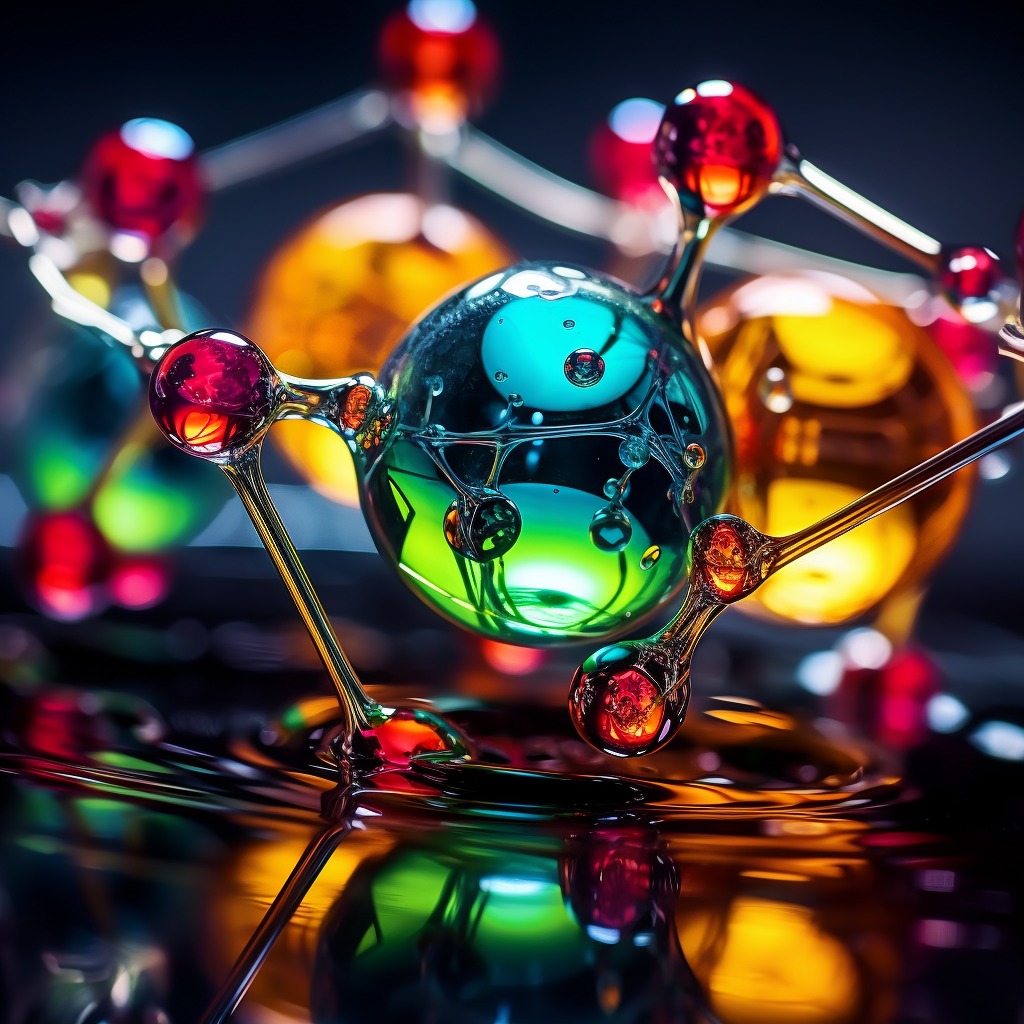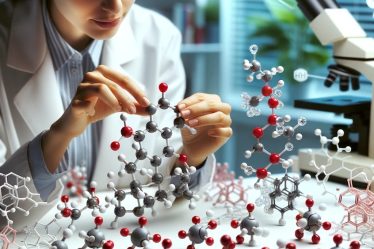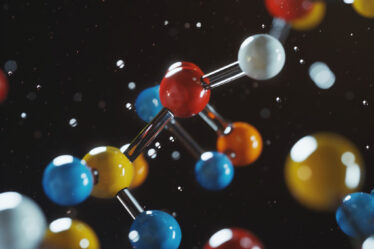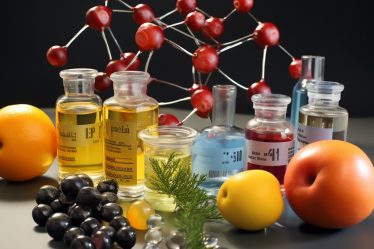
If you’ve ever participated in a chemistry class or received tutoring in science, you’ve probably heard about the hydrogen bond. These seemingly simple forces are anything but trivial. They are fundamental to a multitude of chemical reactions and natural processes.
Here’s a glimpse of what you’ll learn:
- The basics of the hydrogen bond.
- The role of electronegativity.
- Hydrogen bond donors and acceptors.
- Types of hydrogen bonds.
- The hydrogen bond in water and biology.
- The role of tutoring.
- Frequently asked questions about the hydrogen bond.
- Glossary of hydrogen bond terms.
Let’s dive into the fascinating world of hydrogen bonds. Whether you’re a student, a private teacher, a tutor, or thirsty for knowledge, this comprehensive guide will offer valuable insights and lessons.
Discover your ideal chemistry tutor at meet’n’learn and skyrocket your understanding to new heights!
Hydrogen Bond: A Basic Definition
A hydrogen bond can be defined as an attractive force between a hydrogen atom attached to a highly electronegative atom of one molecule and another electronegative atom in a different molecule.
The electronegative atoms are usually oxygen, nitrogen, or fluorine, which can pull the electrons away from the hydrogen atom. The hydrogen atom has a partial positive charge and is attracted to another molecule’s negatively charged electronegative atom. This forms a hydrogen bond, a dipole-dipole interaction stronger than regular dipole-dipole and dispersion forces, but not as strong as covalent bonds.
How is a Covalent Bond Formed?
Often, during tutoring sessions, tutors explain this concept using simple analogies to help students visualize it. Picture a magnet. Just as the opposing forces attract each other, a similar scenario occurs on the microscopic level with hydrogen bonds.
The Science Behind the Hydrogen Bond
This fundamental concept plays a significant role in various fields, from influencing the three-dimensional structures of proteins to contributing to the unique properties of water. Despite its name, a hydrogen bond is not a true bond but a solid form of intermolecular attraction. Understanding the nature of hydrogen bonds is crucial for students taking chemistry classes.
How to calculate Molar Mass and Mass Fraction?
Electronegativity and its Importance
Electronegativity measures how strongly an atom can attract a bonding pair of electrons toward itself. It is a crucial concept in understanding the formation of chemical bonds, including the hydrogen bond.
When a hydrogen atom covalently bonds to a highly electronegative atom, such as oxygen, nitrogen, or fluorine, the shared electrons are drawn more toward the electronegative atom. This creates a dipole across the bond, meaning there is a positive charge on the hydrogen and a negative charge on the other atom. This charge separation sets the stage for hydrogen bonding.
Hydrogen, with its partial positive charge, is then attracted to a lone pair of electrons on another electronegative atom, forming a hydrogen bond. Understanding electronegativity and how it facilitates hydrogen bonding is a crucial aspect of advanced chemistry lessons and essential for anyone looking to understand molecular interactions.
Hydrogen Bond Donors and Acceptors
In hydrogen bonding, there are two crucial roles – the hydrogen bond donor and the hydrogen bond acceptor. The donor is the molecule that includes the hydrogen atom, part of the bond. In contrast, the acceptor is the electronegative atom in another molecule, which attracts the hydrogen atom.
Typically, the hydrogen bond donor is a molecule where hydrogen is bonded to a highly electronegative atom such as nitrogen, oxygen, or fluorine. The bond’s polar nature gives the hydrogen a partial positive charge, allowing it to act as a donor. The acceptor, conversely, is a molecule with a pair of non-bonding electrons that can form a bond with the positively charged hydrogen atom.
This division of roles between the donor and acceptor is fundamental to the hydrogen bond. It is a subject that tutors often emphasize when teaching hydrogen bonds.
Ethanol and Alcohols in Chemistry explained.
Diving into the Types of Hydrogen Bonds
Hydrogen bond, based on its characteristics and the atoms it involves, can be categorized into different types:
- Intermolecular Hydrogen Bond
- Intramolecular Hydrogen Bond
- Symmetrical Hydrogen Bond
Intermolecular Hydrogen Bonds
Intermolecular hydrogen bonds occur between separate molecules as the glue that holds the molecules together. One of the most prevalent examples of intermolecular hydrogen bonding is observed in water (H2O) molecules:
- Atoms involved: Each water molecule consists of two hydrogen atoms and one oxygen atom.
- Formation: In each water molecule, the hydrogen atoms form polar covalent bonds with the oxygen atom. This gives the oxygen atom a slight negative charge and the hydrogen atoms a slight positive charge.
- Hydrogen bonding: The slightly positively charged hydrogen atom in one water molecule is attracted to the slightly negatively charged oxygen atom in another water molecule, forming a hydrogen bond.
Here’s how we could illustrate this process:
H2O…H2O
‘…’ in the formula above represents a hydrogen bond forming between the water molecules.
These intermolecular hydrogen bonds are responsible for many of the unique properties of water, such as its high boiling point and ability to act as a solvent for many substances.
Explore Acids, Bases and pH.
Intramolecular Hydrogen Bonds
Intramolecular hydrogen bonds occur within a single molecule. This type of bond forms when a hydrogen atom in a molecule is attracted to an electronegative atom in the same molecule. An example of intramolecular hydrogen bonding can be observed in molecules such as salicylic acid:
- Atoms involved: In a salicylic acid molecule, a hydrogen atom is bonded to an oxygen atom (forming a hydroxyl group), and there’s also a carbonyl group (a carbon atom double-bonded to another oxygen atom) in the molecule.
- Formation: The hydrogen atom in the hydroxyl group forms a polar covalent bond with its oxygen atom. This gives the oxygen a slight negative charge and the hydrogen a slight positive charge.
- Hydrogen bonding: The slightly positively charged hydrogen atom is attracted to the slightly negatively charged oxygen atom in the carbonyl group, forming an intramolecular hydrogen bond.
Here’s how we could illustrate this process:
HO…C6H4…COOH
The ‘…’ in the formula above represents an intramolecular hydrogen bond within the salicylic acid molecule.
What are Hydroxides?
Symmetrical Hydrogen Bonds
Symmetrical hydrogen bonds, also known as symmetric hydrogen bonds, occur when the lengths of the bonds on both sides of the hydrogen atom are equal. This symmetrical structure is typical in certain crystalline substances, such as ice. Let’s understand this concept using ice as an example:
- Atoms involved: In an ice crystal, each water (H2O) four other water molecules surround molecule.
- Formation: Each water molecule forms two hydrogen bonds as a donor (hydrogen atom covalently bonded to oxygen) and two as an acceptor (oxygen atom attracting a nearby hydrogen atom).
- Hydrogen bonding: These hydrogen bonds form a regular, repeating pattern in the ice crystal, creating a symmetric network of hydrogen bonds where the length of all the bonds are identical.
Here’s how we could illustrate this process:
H2O…H2O…H2O…H2O…H2O
Each ‘…’ in the formula above represents a symmetric hydrogen bond within the ice crystal.
This symmetric structure of hydrogen bonds gives ice its unique solid structure, and it’s the reason why ice floats on liquid water.
Introduction to Redox Reactions.
Hydrogen Bonds: A Key Role in Water
Hydrogen bonds play a vital role in water. They are the primary reason why water has some of its unique properties. For instance, they give water its high boiling and melting points compared to similar-sized compounds.
The Role of Hydrogen Bonds in Water
Hydrogen bond is crucial in dictating water’s physical and chemical properties. These bonds make water behave in unique ways compared to other substances:
- High Boiling and Freezing Points: Hydrogen bonds require more heat to break compared to other types of bonds, leading to higher boiling and freezing points for water.
- Surface Tension: Hydrogen bonds create a strong interaction between water molecules, leading to high surface tension. This is why small insects can walk on water without breaking the surface.
- Universal Solvent: The polar nature of water, due to hydrogen bonding, makes it a good solvent for many substances, earning it the title of “universal solvent”.
- Lower Density of Ice: In the solid state (ice), water molecules form a lattice structure due to hydrogen bonding, which is less dense than liquid water. This is why ice floats on water.
- High Heat Capacity: The ability of water to absorb much heat before changing its temperature is due to the energy needed to break the hydrogen bonds.
During your chemistry classes or tutoring sessions, understanding how a hydrogen bond functions in water is essential in chemistry, biology, and environmental science.
The Role of Hydrogen Bonds in DNA and Proteins
Hydrogen bonds are important in inorganic chemistry and are critical in biological molecules, particularly DNA and proteins.
- DNA Structure: Hydrogen bonds hold together the two strands of the DNA helix, facilitating replication and transcription processes.
- Protein Folding: Hydrogen bonds contribute to the secondary and tertiary structures of proteins, which are crucial for their function.
- Enzyme Function: Hydrogen bonds can help enzymes interact with their substrates, driving biological reactions.
- Cell Membrane Structure: The hydrogen bonds in water influence the formation of cell membranes through hydrophobic and hydrophilic interactions.
- Water Transport in Plants: Hydrogen bonds enable capillary action, allowing water and nutrients to be transported against gravity in plants.
Struggling with biology topics? Explore our extensive collection of biology educational blog posts designed to simplify complex concepts for you. Whether it’s photosynthesis, the intricacies of green algae, understanding bacteria and viruses, or delving into the fascinating world of genetics and cells, our resources have got you covered. Expand your knowledge and enhance your learning journey with us today.
The Strength and Comparison of Hydrogen Bonds
When we speak about the strength of hydrogen bonds, it’s important to note that they are stronger than a van der Waals interaction but weaker than covalent or ionic bonds. Despite their relative weakness, their sheer number and ability to constantly break and reform make them extremely crucial in chemical systems.
Comparing different types of bonds in a tutoring session can help students better grasp the nature of chemical interactions and the significant role hydrogen bonds play in these systems.
Teaching and Learning about Hydrogen Bonds: Strategies and Approaches
Understanding hydrogen bonds can be challenging due to their complex nature. However, tutors use effective teaching strategies and approach to help make this topic more accessible to students. A great method is through active learning – applying the concept in hands-on experiments that allow students to directly observe the impacts of hydrogen bonds.
Tutors and teachers also utilize digital resources, including interactive animations and simulations that make the invisible world of atoms and bonds more tangible. These tools can significantly enhance the learning and tutoring experience, making the abstract concept of hydrogen bonding more concrete.
Looking for a chemistry tutor? Enter “chemistry tutor Glasgow” or “chemistry teacher Sheffield” on your preferred tutoring platform, such as meet’n’learn to find a teacher who can meet your specific needs.
If you thrive in group learning environments, search “chemistry classes London” or “chemistry lessons Manchester” online to discover local schools offering chemistry lessons.
One Last Dive into Hydrogen Bond
Understanding hydrogen bonds is fundamental to mastering chemistry. From water’s unique properties to the structuring of DNA and proteins, hydrogen bonds underlie many natural phenomena. They play significant roles not just in scientific research but also in our everyday lives.
Learning about hydrogen bonds can be challenging. Still, students can grasp this crucial concept with effective teaching strategies, study resources, and the help of a tutor or a private teacher. Whether you’re a student seeking to learn or a lifelong learner, the world of hydrogen bonds offers a fascinating area to explore.
FAQs: Addressing Common Questions About the Hydrogen Bond
1. Why are hydrogen bonds important?
Hydrogen bonds are important because they are crucial for many physical and chemical properties of substances, including water. They also play key roles in the structure and function of biological macromolecules such as DNA and proteins.
2. What is the difference between hydrogen and covalent bonds?
While both are bonds between atoms, a covalent bond involves sharing electron pairs between atoms. In contrast, a hydrogen bond is an attractive force between a hydrogen atom from one molecule and an electronegative atom from another molecule.
3. How do hydrogen bonds affect the properties of water?
Hydrogen bonds give water unique properties, such as a high boiling point, high heat capacity, and the ability to act as a universal solvent.
4. How do hydrogen bonds contribute to the structure of DNA and proteins?
In DNA, hydrogen bonds connect the base pairs, enabling the DNA to maintain its double-helix structure. In proteins, they help maintain the protein’s shape by holding the folds of the amino acid chains in place.
Complete Chemistry Glossary: Hydrogen Bond
- Electronegativity: A measure of how strongly atoms attract bonding electrons to themselves.
- Hydrogen Bond Donor: The molecule which includes the hydrogen atom in a hydrogen bond.
- Hydrogen Bond Acceptor: The electronegative atom in another molecule, which attracts the hydrogen atom in a hydrogen bond.


